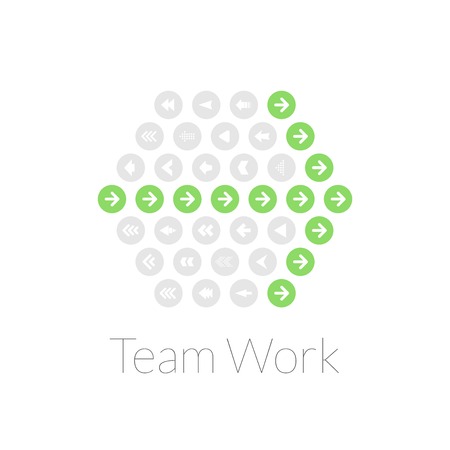1. Preparing for a Successful First Day
Creating a Welcoming Workspace
Setting up a comfortable and organized workspace is one of the best ways to help new team members feel valued from day one. Make sure their desk or workstation is clean and fully equipped with all the essentials they’ll need. A personalized welcome note or small company swag, like a mug or notebook, can also make a big difference in making them feel included.
Workspace Setup Checklist
| Item | Description |
|---|---|
| Desk & Chair | Ensure an ergonomic setup with adjustable seating and ample desk space. |
| Office Supplies | Provide pens, notepads, sticky notes, and other necessary supplies. |
| Welcome Kit | Include a personalized welcome note and branded items (like t-shirts or mugs). |
| Nameplate/Badge | Prepare any required identification or access badges ahead of time. |
Arranging Tech Access and Tools
Nothing slows down onboarding like missing tech access. Make sure all logins, email accounts, and software licenses are ready to go before your new hire arrives. Set up their computer with necessary programs installed and grant them access to shared drives, communication tools, and any key platforms your team uses.
Tech Access Preparation Steps
| Step | Details |
|---|---|
| Create Email Account | Set up company email address and calendar invites for orientation meetings. |
| User Permissions | Grant access to internal systems (HR portal, project management tools, etc.). |
| Device Setup | Install required software and check hardware functionality. |
| Password & Security Info | Provide instructions for secure password setup and IT support contact details. |
Providing Key Resources & Information
A successful first day also means equipping new hires with information that helps them navigate their new workplace confidently. Share an employee handbook, office map, emergency procedures, Wi-Fi details, and introduce them to key contacts within the team. Assigning a buddy or mentor can offer extra support as they settle in.
Essential Resources for New Hires:
- Employee Handbook: Overview of company policies, culture, and benefits.
- Team Directory: List of team members with roles and contact info.
- Schedule for First Week: Clearly outlined agenda for training sessions and meetings.
- Buddy/Mentor Assignment: Designate someone who can answer questions and show them around.
- Facilities Guide: Instructions for using office equipment, kitchen areas, restrooms, etc.
An organized approach to workspace setup, tech readiness, and resource sharing ensures your new team member feels confident and welcomed right from their very first day.
2. Structured Orientation and Training
Designing a Welcoming Orientation Program
A strong orientation program is the first step in helping new team members feel comfortable and confident. Start by creating a clear schedule for their first week. This schedule should include introductions to key people, an office tour, and a rundown of important tools and resources. Make sure to provide a welcome packet with helpful information such as company values, mission, benefits, and frequently asked questions.
Sample First-Week Orientation Schedule
| Day | Main Activities |
|---|---|
| Monday | Welcome breakfast, HR paperwork, team introductions, office tour |
| Tuesday | IT setup, overview of systems and tools, intro to department leads |
| Wednesday | Company culture workshop, lunch with mentor or buddy, Q&A session |
| Thursday | Role-specific training, meet with manager to set goals and expectations |
| Friday | Shadowing team members, wrap-up meeting to address questions |
Building Foundational Knowledge Through Training Sessions
Training sessions should cover both technical skills and an understanding of workplace culture. Use a mix of learning formats: presentations, hands-on activities, group discussions, and e-learning modules. Assign a mentor or “buddy” who can help answer questions and offer guidance during the first few months.
Cultural Awareness in the American Workplace
- Open Communication: Encourage new hires to ask questions and share feedback.
- Diversity and Inclusion: Introduce company policies that support equality and respect for all backgrounds.
- Work-Life Balance: Explain expectations around working hours, breaks, and remote work options.
- Team Collaboration: Highlight regular meetings, brainstorming sessions, and collaborative projects.
Tip: Use Real-Life Scenarios
Incorporate real examples that reflect your workplace culture. For example, run through a mock team meeting or role-play how to handle common challenges. This helps new hires understand not just what is expected but also how things are typically done within your organization.

3. Fostering Team Integration and Relationship Building
Encouraging Social Interaction
Building strong relationships among team members is a key part of successful onboarding. Creating opportunities for social interaction helps new hires feel welcome and connected. Here are some simple ways to foster these connections:
- Welcome Lunches or Coffees: Organize informal gatherings like team lunches, virtual coffee breaks, or after-work happy hours.
- Team Introductions: Have each team member introduce themselves and share fun facts, hobbies, or interests.
- Icebreaker Activities: Use quick icebreakers during meetings to lighten the mood and help people get to know each other.
Mentorship Programs
A mentorship program pairs new hires with experienced team members who can offer support, answer questions, and provide guidance. This not only helps the newcomer feel at ease but also speeds up their adjustment period. Below is a simple example of how a mentorship structure could look:
| Mentor Role | Mentee Benefit |
|---|---|
| Offer company insights and unwritten rules | Faster adaptation to company culture |
| Answer job-specific questions | Reduces confusion and frustration |
| Introduce to other team members | Expands professional network quickly |
| Provide regular check-ins | Continuous support during first months |
Team Bonding Activities
Organizing regular team bonding activities both in-person and virtually helps strengthen trust and collaboration. These activities do not have to be elaborate—simple initiatives often work best:
- Collaborative Projects: Assign small group projects that require teamwork and encourage cross-functional collaboration.
- Themed Days: Host themed dress days or potluck lunches to create a sense of fun and unity.
- Volunteer Together: Participate as a team in community service events, which can build camaraderie while giving back.
Sample Team Bonding Ideas Table
| Activity Type | Description | Frequency Suggestion |
|---|---|---|
| Monthly Team Lunches | Catered or potluck lunch for casual conversation and sharing updates. | Once a month |
| Virtual Game Sessions | Online games or quizzes to engage remote or hybrid teams. | Bi-weekly or monthly |
| Team-building Workshops | Professional facilitators guide exercises for communication and trust. | Quarterly or bi-annually |
| Offsite Retreats | A day away from the office for relaxation, planning, and bonding. | Annually or as budget allows |
The Power of Personal Connections at Work
Nurturing authentic relationships within your team will make new members feel valued and supported from day one. By promoting open communication, encouraging informal interactions, and offering mentorship, you set everyone up for success in a positive work environment.
4. Clear Communication of Expectations and Feedback
One of the most important parts of onboarding and integrating new team members is making sure expectations are clear from day one. New hires feel more confident and motivated when they know exactly what is expected of them, understand the companys core values, and receive regular feedback as they settle in.
Setting Clear Goals
Right at the start, it helps to outline specific goals for the new team member. This can be done with a simple table that highlights key objectives for their first few months:
| Timeframe | Key Goals |
|---|---|
| First Week | Complete onboarding training and meet the team |
| First Month | Start contributing to small projects and attend department meetings |
| First 90 Days | Take ownership of assigned tasks and begin sharing ideas in meetings |
Sharing Company Values
It’s essential to introduce new hires to the company culture and values early on. This helps them feel part of the bigger picture and understand how their role supports overall company goals. Consider sharing stories or examples that demonstrate these values in action, or provide a “culture handbook” that outlines your workplace principles.
Providing Consistent, Constructive Feedback
Regular feedback is key to helping new employees grow and feel supported. Feedback should be constructive, specific, and timely. Here’s a simple approach you can use:
| When to Give Feedback | How to Give Feedback | Why It Matters |
|---|---|---|
| Weekly check-ins | Praise achievements, identify areas for growth, and answer questions | Keeps communication open and builds trust |
| End of first month review | Discuss progress toward goals and adjust expectations if needed | Ensures alignment with role and company standards |
| Ongoing (as needed) | Offer real-time feedback on performance or behavior | Helps correct issues early and encourages continuous improvement |
Tips for Effective Communication During Onboarding:
- Use clear language—avoid jargon that might confuse someone new.
- Create opportunities for two-way communication so new hires can ask questions.
- Be approachable and encourage honesty in all interactions.
- Celebrate wins, no matter how small, to boost morale.
- Always tie feedback back to company values and goals.
5. Continuous Support and Check-ins
Why Ongoing Support Matters
Starting a new job can be overwhelming, so it’s important to offer ongoing support after the initial onboarding period. Regular check-ins help new hires feel welcomed, valued, and confident in their roles. When employees know that their questions are always welcome, they’re more likely to engage, collaborate, and contribute to the team.
The Power of Regular Check-ins
Consistent communication between managers and new hires is key to successful integration. Scheduled check-ins—whether weekly or bi-weekly—give new team members a chance to discuss challenges, share wins, and get clarification on expectations. These meetings should be relaxed and supportive, not just performance reviews.
Sample Check-in Topics
| Topic | Purpose |
|---|---|
| Progress Updates | Track learning milestones and address any gaps |
| Feedback Sessions | Give and receive feedback about the onboarding process |
| Team Integration | Discuss relationships with colleagues and collaboration opportunities |
| Resources Needed | Identify tools or training that could help success |
Offering Ongoing Support
Support doesn’t stop at answering questions. Assigning a mentor or buddy, providing learning resources, and creating an open-door policy for concerns can make a big difference. This helps new employees build confidence and independence over time.
Soliciting Feedback from New Hires
Asking for feedback shows that you value your employees’ opinions. Encourage new team members to share what’s working well and what could be improved in the onboarding process. This information not only helps them feel heard but also guides improvements for future hires.
Ways to Collect Feedback
| Method | Description |
|---|---|
| One-on-one Meetings | A personal setting for honest conversations |
| Anonymized Surveys | A way for employees to share thoughts without pressure |
| Email or Messaging Platforms | Quick check-ins or suggestions via company channels |
Cultivating a Sense of Belonging
Continuous support and regular check-ins go a long way toward helping new hires feel like they belong. When people feel seen and supported, they are more likely to be engaged and motivated in their new role.


